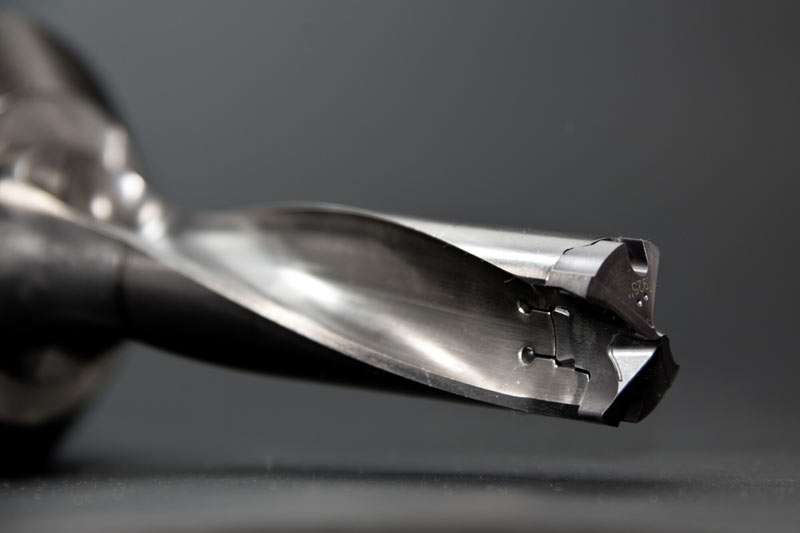Everyone has been there. You are trying to cut something, but the blade is too dull, and it just will not cut. Whether you are using scissors or a larger blade, it is probably made of steel, but steel tends to wear down, especially after many uses.
If you find your steel cutting tools wearing down sooner than you would like, one option is to switch to carbide. But what is carbide? Keep reading to find out what it is and how it can be used.
History
Using metals as tools have been part of humanity’s history since prehistoric times. The first evidence for metal use comes from Spain, where small amounts of gold have been found that date back to around 40,000 BCE.
Other metals that found use in prehistoric times include silver, copper, tin, and iron. The first evidence for the use of lead is from around 6,000 BCE. However, metals’ true power would not be seen until people could melt them down to make alloys.
By melting down and mixing copper and tin, people could make even stronger metal than either of the two. This alloy is called bronze and has been around since about 3,500 BCE.
This shift in metalworking was so significant that it gets its name, the Bronze Age. A similar change came around 1,200 BCE when people found a technique to extract iron from ore more easily, ushering in the Iron Age.
However, around 1,800 BCE, the first steel was made even before this, combining iron with a small amount of carbon to make it stronger. Adding more carbon to iron and other metals would bring about carbides, but this would not happen until 1927.
What Is Carbide?
Carbide is a type of material that consists of large amounts of carbon mixed with other metals. In carbides, the different metals come together at the molecular level to form chemical bonds.
Carbide can consist of many different metals, but the first and most common is tungsten carbide. What is the carbide formula? For tungsten carbide, the formula is WC because tungsten is W and carbon is C.
This formula means the molecules in the metal consist of one atom of carbon for every atom of tungsten, so the carbide is half carbon and half tungsten. However, there are other combinations of metals that form carbides.
These other metals include titanium, zirconium, hafnium, vanadium, niobium, tantalum, chromium, and molybdenum. These have different uses depending on the exact application that you need.
Another common carbide is a mixture of carbon with calcium. Calcium carbide consists of two atoms of carbon for each atom of calcium in each molecule.
In addition, iron can form carbides with different ratios of carbon and iron atoms in each molecule, depending on the application. But if the steel is an alloy of iron and carbon, how is this different from steel?
Steel vs. Carbide
Although they consist of the same two elements, steel is very different from iron carbides. Steel only contains up to 2% carbon, whereas carbides have much more. Iron carbides can come in various forms for other uses.
The most common forms have two or three iron atoms for each carbon atom or seven iron atoms for every three carbon atoms. This situation means the lowest percentage of carbon in these carbides is around 33%.
If these are so different, what is carbide steel? This term is somewhat of a misnomer because it usually refers to tungsten carbide instead of iron carbide. The use of the word steel comes from the fact that steel is so ubiquitous.
For centuries, steel has been the standard for cutting tools and strong metal structures. Even though it remains widespread, carbides have started to replace steel for many applications.
Until the technology required to produce carbides improves, steel will remain easier and cheaper to produce, so the more affordable option is steel for now. However, carbides are much stronger than steel and do not wear down as quickly.
This reality makes carbides a better choice for many applications despite the higher initial cost.
What Is Carbide Used For?
Carbides have found uses in many applications because they are harder, more durable, and can operate at higher temperatures and pressures than traditional metalworking equipment made of steel or other metals.
Among the many carbide uses, one of the most common is for cutting tools. Over time, the process of cutting begins to wear metals down, making it more difficult to cut things in the future.
Whatever you need to cut, plotter blades made of carbide rather than steel may be the better choice for your needs. In addition to cutting tools, carbides have several other essential applications depending on the metal used.
Tungsten carbide is very hard and goes to make things like gears and other mining and oil collection tools. Titanium carbide goes into materials like ceramics and tools to make them more durable.
Silicon carbide is used as an abrasive in things like sanding and grinding tools. Hafnium carbide goes into layers on the surface of some fuel cells, such as the photovoltaic cells in solar panels.
Chromium carbide resists corrosion very well, so it goes into things like bearing and valve seals, where corrosion would generally be expected.
Next Steps
Now that we have answered the question, “What is carbide?” and look at some of its uses, feel free to do some research on your own and decide if carbide is right for you.
If you are interested in carbide plotter blades, please contact us for more information on how we can help with your next project!
Simple Solutions International offers a full selection of plotter blades and plotter pens as well as a variety of useful tools for use in plotting and sign making such as plotter adapters, masking film, spray mask, and other sign making tools and accessories.

